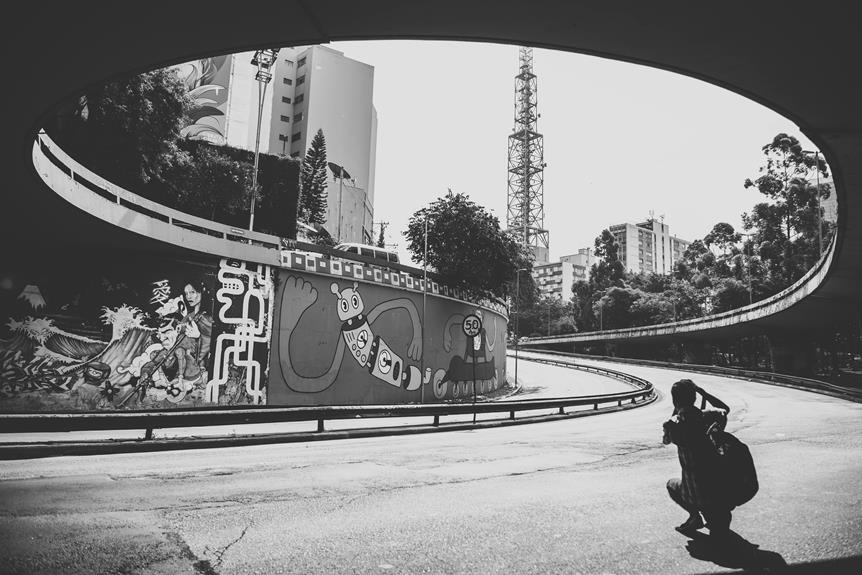Pop Art Food

Pop Art Food emerged in the 1950s and 1960s, reflecting and critiquing consumer culture through vibrant, everyday food items. Pioneers like Andy Warhol, with his Campbell’s Soup Cans, and Claes Oldenburg, known for his large-scale sculptures, led this movement. These artworks didn’t just celebrate mass production but also challenged the elitism of art, democratizing food across social classes. They used bold colours and dynamic compositions to blur the lines between high and low culture. As you explore further, you’ll see how Pop Art Food encapsulates evolving societal values and the impact of mass consumerism on modern life.
Key Points
- Pop Art Food emerged in the 1950s and 1960s, celebrating and critiquing consumer culture.
- Key artists include Andy Warhol, Claes Oldenburg, and Wayne Thiebaud, who are known for their vibrant and iconic food imagery.
- The movement challenged art elitism and blurred lines between high and low culture.
- Technological advancements post-WWII influenced Pop Art’s focus on mass-produced food items.
- Modern Pop Art Food uses vivid colour schemes and high contrast to create energetic and dynamic visuals.
The Origins of Pop Art Food
Pop art food emerged in the 1950s and 1960s as a vibrant celebration of consumer culture, driven by artists like Andy Warhol and Claes Oldenburg who used food imagery to critique and reflect contemporary values.
You’ll find that the historical context of post-war mass consumerism played a critical role in shaping this movement. Artists were heavily influenced by the era’s advertising and mass production techniques, utilizing bold colors and repetitive patterns to mirror the cultural significance of convenience and abundance.
Key Artists and Their Works
When examining key artists and their works in the pop art food movement, you’ll find that each artist uniquely leveraged food imagery to challenge societal norms and provoke thought.
Andy Warhol‘s Campbell’s Soup Cans series stands as a seminal piece of cultural commentary and artistic innovation.
Claes Oldenburg‘s larger-than-life sculptures, such as the Soft Toilet, disrupt traditional sculpture norms.
Wayne Thiebaud’s vibrant dessert paintings like Cakes and Pies evoke nostalgia and indulgence, blending popular culture with fine art.
Evelyne Axell’s Ice Cream offers a feminist perspective on desire, challenging traditional gender representation.
Roy Lichtenstein’s Still Life with Goldfish Bowl combines comic book aesthetics with food imagery, bridging the gap between popular culture and high art.
Impact of Consumer Culture
In examining the impact of consumer culture, you’ll find that Pop Art’s vibrant depictions of everyday food items serve as a powerful critique of mass production and advertising’s pervasive influence on societal values. Through artistic transformation, Pop Artists like Warhol and Oldenburg turned mundane consumer goods into extraordinary art, challenging the elitism traditionally associated with art.
Their works provided cultural commentary on consumer behaviour, highlighting how mass production democratized food products across social classes. The American Supermarket exhibition epitomized this shift, featuring mass-producible items alongside iconic Pop Art, thereby blurring the lines between high and low culture.
This societal influence underscored how deeply intertwined consumer culture and artistic expression had become, reflecting on the ever-evolving values shaped by mass consumption.
Technological Influences
Technological advancements in food storage and preparation reshaped post-war food culture, offering pop artists a rich avenue to critique modern consumerism. You’ll notice how technological innovations and cultural influences converged, transforming food consumption into a symbol of identity and communal bonds.
Pop artists like Andy Warhol harnessed this shift to comment on post-war consumerism. They highlighted:
- Mass production – Reflecting how food became an emblem of homogenized societal values.
- Advertising’s influence – Critiquing how marketing shaped public perceptions and desires.
- Cultural role of food – Using food imagery to explore societal fragmentation and unity.
These artistic commentaries reveal the profound impact of technological changes on cultural narratives, encapsulating the era’s essence through vivid, thought-provoking visuals.
Modern Interpretations
In modern interpretations of pop art food, you see artists utilizing vivid color schemes to breathe new life into everyday objects, transforming them into compelling visual narratives.
This approach not only captures attention but also prompts you to reconsider the mundane aspects of consumer culture.
Vivid Color Schemes
Modern pop art food captivates audiences with its use of vivid colour schemes that bring both energy and dynamism to the artwork. These bold and vibrant colours aren’t just for show; they’re rooted in colour psychology and have a powerful visual impact.
By using specific artistic techniques and design elements, artists create pieces that aren’t only visually striking but also emotionally engaging.
Consider the following aspects:
- Colour Psychology: Bright colours evoke joy, excitement, and curiosity.
- Visual Impact: High contrast and saturation draw the viewer’s eye immediately.
- Artistic Techniques: Layering colours and textures adds depth and complexity.
These vivid palettes ensure that modern pop art food remains a dynamic and energetic fixture in contemporary art.
Everyday Object Transformation
When pop artists transform everyday objects like food into vibrant art, they not only challenge traditional artistic norms but also provide a compelling commentary on consumer culture and societal values.
This artistic innovation turns the mundane into the extraordinary, making you rethink the significance of everyday items. Andy Warhol’s Campbell’s Soup Cans or Claes Oldenburg’s giant soft sculptures of hamburgers are prime examples of how food imagery critiques commercialization while maintaining visual appeal.
These works blur the line between high and low culture, encouraging you to question mass production and advertising’s impact on society. By elevating ordinary objects, pop artists deliver a powerful cultural commentary that continues to resonate, revealing the complex interplay between art, commerce, and everyday life.
Pop Art Food in Media
Pop Art food imagery captivates audiences across a spectrum of media, from TV commercials and films to social media and cookbooks, by blending vibrant visuals with cultural nostalgia. In TV commercials, exaggerated food visuals inspired by Pop Art grab consumer attention, making products more memorable.
Social media trends, especially on Instagram, have popularized Pop Art-inspired food accounts, drawing followers through bold, colourful aesthetics. The influence of Pop Art food imagery in media can be summarized as follows:
- TV Commercials: Use vibrant, exaggerated visuals to appeal to emotions and memories.
- Social Media: Platforms like Instagram thrive on visually striking, Pop Art-influenced content.
- Cookbooks and Magazines: Showcase recipes and styling influenced by the bold aesthetic of Pop Art.
This synergy keeps Pop Art food imagery relevant and engaging.
Frequently Asked Questions
What Pop Art Artist Is Food?
You’re asking which Pop Art artist is food. Claes Oldenburg’s sculptures and Ed Ruscha’s text-based works both embody food in unique ways, challenging norms and exploring consumerism. Their art offers deep insight into culture and society.
What Are Some Examples of Food in Pop Art?
You’ll find food symbolism and culinary motifs in Andy Warhol’s Campbell’s Soup Cans, Claes Oldenburg’s giant hamburger, Wayne Thiebaud’s dessert paintings, Evelyne Axell’s Ice Cream, and Roy Lichtenstein’s comic-inspired artworks. Each artist redefines food in art.
What Food Did Andy Warhol Eat?
Andy Warhol’s diet was simple and repetitive. He often ate his favourite, Campbell’s soup, along with Coca-Cola and chocolate bars. His preference for fast food also included hamburgers and fries, reflecting his fascination with consumer culture.
Why Were Pop Artists Obsessed With Food?
You see, pop artists were obsessed with food because it symbolized consumer culture’s vibrancy and abundance. They used it to critique mass production’s influence on societal values, exploring complex themes around modern consumerism and advertising.
Conclusion
You’ve seen how Pop Art Food blends creativity with consumer culture, reflecting society’s fascination with everyday items. Key artists transformed mundane objects into iconic works, challenging perceptions and celebrating commercialism.
Technological advances further influenced this art form, making it more accessible and varied. Today, modern interpretations continue to evolve, appearing in media and influencing contemporary art.
By examining Pop Art Food, you gain a deeper understanding of its lasting impact on both art and culture.
Author: Jessica Hartley

